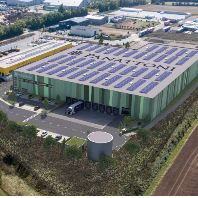Southern Europe will continue to interest shopping center investors, and certain north European markets will be drawing funds too, said speakers at ICSC’s 29th annual European Conference, which was held in Rome from April 19-21.
Between 1999 and 2003 Spain led Europe in shopping center investment, with €4.2 billion ($4.98 billion) invested, said Christopher Wicker, president of the Paris-based Retail Consulting Group. France came in second, with €3.3 billion, and Italy was third, with €2.9 billion, but is “galloping to the point of catching France,” he said.
Investment in the European shopping center industry now totals €10.7 billion, and that is divided almost equally between the United Kingdom and continental Europe, said Andy Watson, head of investment and valuation at Retail Consulting.
Investment funds came from northern Europe, the United Kingdom and the United States, he said. Italy, a major investment draw in 2003, will probably remain so this year, according to a conference panel. Scandinavia, particularly Sweden, is drawing interest too, said Watson.
Yields on acquisitions last year ranged from 5.5 percent to more than 10 percent in newer markets such as Estonia. Those numbers could bring more U.S. investors into the market. Last year Simon Property Group formed a joint venture with Italian retailer Rinascente to own and build centers in Italy, and The Mills Corp., Hines and Polimeni International are active on the Continent too.
“European yields look pretty good” compared with the United States, said Kathleen M. Nelson, ICSC’s chairman and a managing director of financial services firm TIAA-CREF, which has major investments in shopping centers. Cap rates in the United States have dropped in some circumstances to below 6 percent, she noted.
In another session, panelists reflected on the importance of retail in restoring the economic viability of urban centers.
“Today local governments have to become the engine for developments, not the brake on them,” said Magnus Staehler, mayor of Langenfeld, a city in Germany’s Rhineland region.
Langenfeld, a town of just under 60,000 residents between Düsseldorf and Cologne, faced a serious decline in its economic base as shoppers flocked to discounters in the suburbs. But in the early 1990s, the city launched a 10-year initiative to bring retail back. Besides assisting retailers with the permitting process, Langenfeld officials zealously discouraged development outside the city center.
As a result, Langenfeld has lowered its unemployment rate to 6.9 percent, far less than the national average of more than 10 percent, Staehler said. Three retail projects have already opened in Langenfeld’s core, and yet another is being built.
Absent such measures, “the future of retail in cities is empty streets, empty shops and empty cash registers,” Staehler said.
More than 500 retail real estate professionals from Europe, Africa, Australia and North America attended this year’s meeting. The conference also featured the annual Jean-Louis Solal Awards, given for marketing, and the ICSC European Shopping Centre Awards, which honor outstanding design and development.
Source: ICSC







